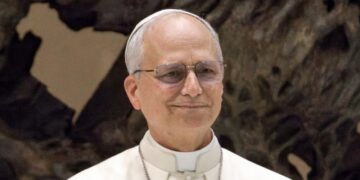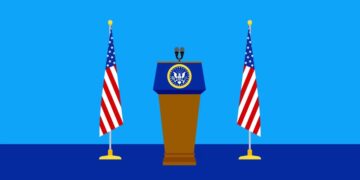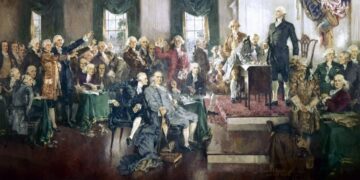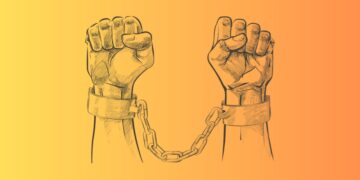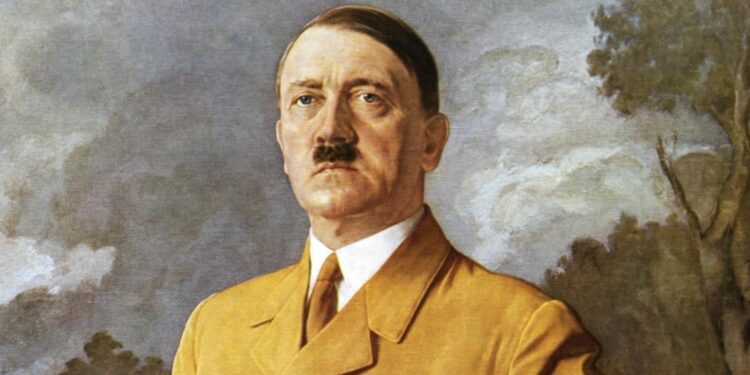The world has seen wars, genocides, terrorism, riots, killings, famines, among other tragedies. The real evil however lies within the architects of these inhuman practices. People who advocated crime to a level no one else could fathom. Their decisions wreaked havoc on humanity and all that comes with it, leading to thousands or even millions of casualties.
Here are the top 20 evilest people in history.
1. Adolf Hitler
Adolf Hitler was a German politician and leader of the Nazi Party. He rose to power as the chancellor of Germany in 1933 and then as Führer in 1934. During his dictatorship from 1933 to 1945, he initiated World War II in Europe by invading Poland on 1 September 1939. He was closely involved in military operations throughout the war and was central to the perpetration of the Holocaust. Hitler aimed to eliminate Jews from Germany and establish a New Order to counter what he saw as the injustice of the post-World War I international order dominated by Britain and France.
His first six years in power resulted in rapid economic recovery from the Great Depression, the abrogation of restrictions imposed on Germany after World War I, and the annexation of territories inhabited by millions of ethnic Germans, which gave him significant popular support. Under Hitler’s leadership and racially motivated ideology, the Nazi regime was responsible for the genocide of about 6 million Jews and millions of other victims whom he and his followers deemed Untermenschen (subhumans) or socially undesirable.
Hitler and the Nazi regime were also responsible for the killing of an estimated 19.3 million civilians and prisoners of war. In addition, 28.7 million soldiers and civilians died as a result of military action in the European theatre. The number of civilians killed during World War II was unprecedented in warfare, and the casualties constitute the deadliest conflict in history. Hitler’s actions and Nazi ideology are almost universally regarded as gravely immoral. Never in history has such ruination – physical and moral – been associated with the name of one man.
2. Joseph Stalin
Joseph Vissarionovich Stalin was a Georgian revolutionary and Soviet politician who led the Soviet Union from the mid-1920s until 1953 as the general secretary of the Communist Party of the Soviet Union (1922–1952) and premier of the Soviet Union (1941–1953). Despite initially governing the Soviet Union as part of a collective leadership, he eventually consolidated power to become the country’s de facto dictator by the 1930s.
Through his Five-Year Plans, the country underwent agricultural collectivisation and rapid industrialisation, creating a centralised command economy. This led to significant disruptions in food production that contributed to the famine of 1932–1933. To eradicate accused “enemies of the working class”, Stalin instituted the “Great Purge”, in which over a million were imprisoned and at least 700,000 executed between 1934 and 1939.
By 1937, he had complete personal control over the party and state. Under his rule, more than 1.5 million German women were raped. He once said, “One death is a tragedy, a million deaths is simply a statistic.” His totalitarian government has been widely condemned for overseeing mass repressions, ethnic cleansing, deportations, hundreds of thousands of executions, and famines that killed millions.
3. Vlad the Impaler
Vlad III, known as Vlad the Impaler or Vlad Dracula, was Voivode of Wallachia three times between 1448 and his death. In 1456 Vlad invaded Wallachia with Hungarian support. Vlad began a purge among the Wallachian boyars to strengthen his position. Vlad plundered the Saxon villages, taking the captured people to Wallachia where he had them impaled (which inspired his cognomen). Peace was restored in 1460. In February 1462, he attacked Ottoman territory, massacring tens of thousands of Turks and Bulgarians.
He impaled the victim through the buttocks till the stake came out of the mouth. He roasted children, whom he fed to their mothers. And (he) cut off the breasts of women, and forced their husbands to eat them. After that, he had them all impaled. After his death, books describing Vlad’s cruel acts were among the first bestsellers in the German-speaking territories. Vlad’s reputation for cruelty and his patronymic inspired the name of the vampire Count Dracula.
4. Osama Bin Laden
Osama bin Mohammed bin Awad bin Laden, also rendered Usama bin Ladin, was a founder of the pan-Islamic militant organization al-Qaeda. He was a Saudi Arabian citizen until 1994 (stateless thereafter) and a member of the wealthy bin Laden family. Bin Laden was on the American Federal Bureau of Investigation’s (FBI) lists of Ten Most Wanted Fugitives and Most Wanted Terrorists for his involvement in the 1998 U.S. embassy bombings.
Bin Laden is most well-known for his role in masterminding the September 11 attacks, which resulted in the deaths of nearly 3,000 and prompted the United States to initiate the War on Terror. He subsequently became the subject of a decade-long international manhunt. Under his leadership, the al-Qaeda organization was responsible for many other mass-casualty attacks worldwide.
5. Mao Zedong
Mao Zedong, also known as Chairman Mao, was a Chinese communist revolutionary who became the founding father of the People’s Republic of China (PRC), which he ruled as the chairman of the Communist Party of China from its establishment in 1949 until his death in 1976. Ideologically a Marxist–Leninist, his theories, military strategies, and political policies are collectively known as Maoism. Mao had a dream of making China a superpower but in the process, he created the largest genocide in history.
He solidified his control through campaigns against landlords, suppression of “counter-revolutionaries”, “Three-anti and Five-anti Campaigns” and through a psychological victory in the Korean War, which altogether caused the deaths of several-million Chinese. In 1955-1957, Mao launched the Sufan movement and the Anti-Rightist Campaign, with at least 550,000 people persecuted in the latter, most of whom were intellectuals and dissidents.
In 1958, he launched the Great Leap Forward that aimed to rapidly transform China’s economy from agrarian to industrial, which led to the deadliest famine in history and the deaths of 20–46 million people between 1958 and 1962. In 1963, Mao launched the Socialist Education Movement, and in 1966 he initiated the Cultural Revolution, a program to remove “counter-revolutionary” elements in Chinese society which lasted 10 years and was marked by violent class struggle, widespread destruction of cultural artifacts, and an unprecedented elevation of Mao’s cult of personality.
Tens of millions of people were persecuted during the Revolution, while the estimated number of deaths ranges from hundreds of thousands to millions. His regime has been called autocratic and totalitarian, and condemned for bringing about mass repression and destroying religious and cultural artifacts and sites. It was additionally responsible for vast numbers of deaths with estimates ranging from 30 to 80 million victims through starvation, persecution, prison labour and mass executions.
6. Pol Pot
Pol Pot (born Saloth Sâr) was a Cambodian revolutionary and politician who governed Cambodia as the Prime Minister of Democratic Kampuchea between 1975 and 1979. Seeking to create an agrarian socialist society that he believed would evolve into a communist society, Pol Pot’s government forcibly relocated the urban population to the countryside to work on collective farms. Pursuing complete egalitarianism, money was abolished and all citizens made to wear the same black clothing.
Those the Khmer Rouge regarded as enemies were killed. These mass killings, coupled with malnutrition and poor medical care, killed between 1.5 and 2 million people, approximately a quarter of Cambodia’s population, a period later termed the Cambodian genocide. He liked to keep the skulls of people he had killed and he went as far as ordering babies to be torn limb by limb. He has been internationally denounced for his role in the Cambodian genocide, regarded as a totalitarian dictator guilty of crimes against humanity.
7. Genghis Khan
Genghis Khan (born Temüjin Borjigin), also officially Genghis Emperor, was the founder and first Great Khan and Emperor of the Mongol Empire, which became the largest contiguous empire in history after his death. He came to power by uniting many of the nomadic tribes of Northeast Asia. After founding the Empire and being proclaimed Genghis Khan, he launched the Mongol invasions that conquered most of Eurasia. Campaigns initiated in his lifetime include those against the Qara Khitai, Khwarezmia, and the Western Xia and Jin dynasties.
He also conducted raids into Medieval Georgia, the Kievan Rus’, and Volga Bulgaria. These campaigns were often accompanied by large-scale massacres of the civilian populations, especially in the Khwarazmian and Western Xia-controlled lands. His army killed 15 million people in the Iranian plateau. Because of this brutality, which left millions dead, he is considered by many to have been a genocidal ruler. By the end of his life, the Mongol Empire occupied a substantial portion of Central Asia and China.
8. Heinrich Himmler
Heinrich Luitpold Himmler was Reichsführer of the Schutzstaffel (Protection Squadron; SS), and a leading member of the Nazi Party (NSDAP) of Germany. Himmler was one of the most powerful men in Nazi Germany and a main architect of the Holocaust. In 1929, he was appointed Reichsführer-SS by Adolf Hitler. Over the next 16 years, he developed the SS from a mere 290-man battalion into a million-strong paramilitary group, and set up and controlled the Nazi concentration camps.
From 1943 onwards, he was both Chief of German Police and Minister of the Interior, overseeing all internal and external police and security forces, including the Gestapo (Secret State Police). Himmler had a lifelong interest in occultism, interpreting Germanic neopagan and Völkisch beliefs to promote the racial policy of Nazi Germany, and incorporating esoteric symbolism and rituals into the SS.
Himmler formed the Einsatzgruppen and built extermination camps. As facilitator and overseer of the concentration camps, Himmler directed the killing of some six million Jews, between 200,000 and 500,000 Romani people, and other victims; the total number of civilians killed by the regime is estimated at eleven to fourteen million people. Most of them were Polish and Soviet citizens.
9. Kim Jong-il
Kim Jong-il was a North Korean politician who served as the second Supreme Leader of North Korea from 1994 to 2011. He led North Korea from the 1994 death of his father Kim Il-sung, North Korea’s first Supreme Leader, until his own death in 2011, when he was succeeded by his son, Kim Jong-un as part of the Kim dynasty descending from the country’s first leader, Kim Il-sung.
Kim strengthened the role of the military by his Songun (“military-first”) policies, making the army the central organizer of civil society. In April 2009, North Korea’s constitution was amended to refer to him and his successors as the “supreme leader of the DPRK”. Outside observers have characterized him as a dictator and accused him of human rights violations.
10. Saddam Hussein
Saddam Hussein Abd al-Majid al-Tikriti was the fifth President of Iraq from 16 July 1979 until 9 April 2003. Saddam played a key role in the 1968 coup (later referred to as the 17 July Revolution) that brought the party to power in Iraq. Saddam formally rose to power in 1979, although he had already been the de facto head of Iraq for several years.
He suppressed several movements, particularly Shi’a and Kurdish movements which sought to overthrow the government or gain independence, respectively, and maintained power during the Iran-Iraq War and the Gulf War. Hussein’s rule was a repressive dictatorship. He ordered chemical attacks, eye gouging, beatings and severe shocks on people. He also recorded several tortures and deaths to watch them later.
The total number of Iraqis killed by the security services of Saddam’s government in various purges and genocides is conservatively estimated to be 250,000. Saddam’s invasions of Iran and Kuwait also resulted in hundreds of thousands of deaths. On 5 November 2006, Saddam was convicted by an Iraqi court of crimes against humanity related to the 1982 killing of 148 Iraqi Shi’a, and sentenced to death by hanging.
11. Idi Amin
Idi Amin Dada Oumee was a Ugandan military officer who served as the President of Uganda from 1971 to 1979. Popularly known as the “Butcher of Uganda”, he is considered one of the cruelest despots in world history. He killed people by feeding them to crocodiles, claimed he was a cannibal, mutilated one of his wives and rearranged her limbs. As Commander of the Uganda Army he launched a military coup in 1971 and declared himself President on learning that Ugandan President Milton Obote was planning to arrest him for misappropriating army funds.
As Amin’s rule progressed into the late 1970s, there was increased unrest against his persecution of certain ethnic groups and political dissidents, along with Uganda’s very poor international standing due to Amin’s support for the terrorist hijackers in Operation Entebbe. Amin’s rule was characterized by rampant human rights abuses, political repression, ethnic persecution, extrajudicial killings, nepotism, corruption, and gross economic mismanagement. International observers and human rights groups estimate that between 100,000 and 500,000 people were killed under his regime.
12. Ivan the Terrible
Ivan IV Vasilyevich, commonly known as Ivan the Terrible, was the Grand Prince of Moscow from 1533 to 1547 and the first Tsar of Russia from 1547 to 1584. After consolidating his power, Ivan got rid of the advisers from the “Chosen Council” and triggered the Livonian War, which ravaged Russia and resulted in the loss of Livonia and Ingria, but allowed him to establish greater autocratic control over Russia’s nobility, whom he violently purged in the Oprichnina.
The later years of Ivan’s reign were also marked by the Massacre of Novgorod, where more than 60,000 people were tortured to death, and the burning of Moscow by Tatars. He was described as intelligent and devout, but also prone to paranoia, rages, and episodic outbreaks of mental instability that increased with age.
Ivan is popularly believed to have killed his eldest son and heir Ivan Ivanovich and the latter’s unborn son during his outbursts, which left his younger son, the politically ineffectual Feodor Ivanovich, to inherit the throne, a man whose rule directly led to the end of the Rurikid dynasty and the beginning of the Time of Troubles. He loved impaling, beheading, burning, strangling, frying, blinding and disemboweling people.
13. Leopold II of Belgium
Leopold II was King of the Belgians from 1865 to 1909 and, in a completely separate role, the Sovereign of the Congo Free State from 1885 to 1908. During his absolute rule of the Congo, an estimated 10–15 million Africans died which led to the first use of the term “crime against humanity.” Leopold was the founder and sole owner of the Congo Free State, a private project undertaken on his own behalf.
He used Henry Morton Stanley to help him lay claim to the Congo, the present-day Democratic Republic of the Congo. He ran the Congo using the mercenary Force Publique for his personal gain. He extracted a fortune from the territory, initially by the collection of ivory, and after a rise in the price of rubber in the 1890s, by forced labour from the native population to harvest and process rubber.
Leopold’s administration of the Congo was characterized by murder, torture, and atrocities, resulting from notorious systematic brutality. The hands of men, women, and children were amputated when the quota of rubber was not met. Millions of the Congolese people died: modern estimates range from 1 million to 15 million deaths, with a consensus growing around 10 million.
14. Kim Il-sung
Kim Il-sung was the founder of North Korea, which he ruled from the country’s establishment in 1948 until his death in 1994. He held the posts of Premier from 1948 to 1972 and President from 1972 to 1994. Coming to power after the end of Japanese rule in 1945, he authorized the invasion of South Korea in 1950, which resulted in the death of 3 million Koreans. Under his leadership, North Korea was established as a communist state with a publicly owned and planned economy.
North Korea remained critical of the United States defense force’s presence in the region, which it considered imperialist, having seized the American ship USS Pueblo in 1968, which was part of an infiltration and subversion campaign to reunify the peninsula under North Korea’s rule. Known as the Great Leader (Suryong), he established a personality cult which dominates domestic politics in North Korea.
15. Ruhollah Khomeini
Sayyid Ruhollah Musavi Khomeini, also known in the Western world as Ayatollah Khomeini, was an Iranian politician, revolutionary, and cleric. He was the founder of the Islamic Republic of Iran and the leader of the 1979 Iranian Revolution, which saw the overthrow of the last Shah of Iran, Mohammad Reza Pahlavi, and the end of the 2,500 year old Persian monarchy. A cult of personality developed around Khomeini after the Iranian Revolution.
Following the revolution, Khomeini became the country’s Supreme Leader, a position created in the constitution of the Islamic Republic as the highest-ranking political and religious authority of the nation, which he held until his death. Khomeini called democracy the equivalent of prostitution. Khomeini was known for his support of the hostage takers during the Iran hostage crisis, his fatwa calling for the murder of British Indian novelist Salman Rushdie, and for referring to the United States as the “Great Satan” and Soviet Union as the “Lesser Satan.”
The Shia laws were made out to be very stringent and those in violation of it were tortured and killed. He refused the offer to make peace with Iraq, which led to the death of around 1 million people. The Islamic holy war killed over 2 million people. Khomeini has been criticized for human rights violations of Iranians (including his ordering of execution of thousands of political prisoners, war criminals and prisoners of the Iran–Iraq War).
16. Nero
Nero (Nero Claudius Caesar Augustus Germanicus; born Lucius Domitius Ahenobarbus) was Roman emperor from 54 to 68, the last ruler of the Julio-Claudian dynasty. Nero’s mother, Agrippina the Younger, dominated Nero’s early life and decisions until he cast her off and had her killed five years into his reign. Nero’s rule is usually associated with tyranny and extravagance. Nero wreaked havoc in the Roman Empire.
He burnt cities, murdered thousands of people and every member in his family. People were stabbed, burned, boiled, crucified and impaled. The Great Fire of Rome was instigated by Nero to clear the way for his planned palatial complex, the Domus Aurea. He seized Christians as scapegoats for the fire and burned them alive, seemingly motivated not by public justice but by personal cruelty.
17. Maximilien Robespierre
Maximilien François Marie Isidore de Robespierre was a French lawyer and statesman who was one of the best-known and most influential figures of the French Revolution. At first his goal was to create a united and indivisible France, equality before the law, to abolish prerogatives and to defend the principles of direct democracy. But soon, his obsession with guillotining began.
He killed over 40,000 people within 10 months and believed that killing was always better than forgiving. He ordered an attack on Vendée, killing over 100,000 men. He was criticized for trying to establish either a triumvirate or a dictatorship. He was the incarnation of the terror that followed during Year II of the French Revolutionary calendar.
18. Elizabeth Báthory
Countess Elizabeth Báthory de Ecsed was a Hungarian noblewoman from the noble family of Báthory, who owned land in the Kingdom of Hungary (now Hungary, Slovakia and Romania). Báthory has been labeled by Guinness World Records as the most prolific female murderer, though the precise number of her victims is debated. Báthory and four collaborators were accused of torturing and killing hundreds of young women between 1590 and 1610. She is often compared to Vlad the Impaler of Wallachia (on whom the fictional Count Dracula is partly based).
The stories of Báthory’s sadistic serial murders are verified by the testimony of more than 300 witnesses and survivors as well as physical evidence and the presence of horribly mutilated dead, dying and imprisoned girls found at the time of her arrest. Stories describing Báthory’s vampiric tendencies, such as the tale that she bathed in the blood of virgins to retain her youth, were generally recorded years after her death. Nicknames and literary epithets attributed to her include The Blood Countess and Countess Dracula.
19. Talaat Pasha
Mehmed Talaat, commonly known as Talaat Pasha, was one of the triumvirate known as the Three Pashas that de facto ruled the Ottoman Empire during the First World War. He served as Grand Vizier (equivalent to prime minister) of the Ottoman Empire from 1917-1918. He was one of the leaders of the Young Turks and ruled the empire during the Armenian Genocide, which he initiated as Minister of Interior Affairs in 1915.
On 24 April 1915, Talaat Pasha ordered the arrest and deportation of Armenian intellectuals in Constantinople (now Istanbul), most of them being ultimately murdered, and on 30 May 1915 requested the Tehcir Law (Temporary Deportation Law); these events initiated the Armenian Genocide. He is widely considered the main perpetrator of the genocide, and thus is held responsible for the death of between 800,000 and 1,800,000 Armenians.
20. Francisco Franco
Francisco Franco Bahamonde was a Spanish general who led the Nationalist forces in overthrowing the Second Spanish Republic during the Spanish Civil War and thereafter ruled over Spain from 1939 to 1975 as a dictator, assuming the title Caudillo. This period in Spanish history, from the Nationalist victory to Franco’s death, is commonly known as Francoist Spain or the Francoist dictatorship. In 1938 he joined a military coup which, after failing to take Spain, sparked the Spanish Civil War.
Three years later the Nationalists declared victory which extended Franco’s dictatorship over Spain through a period of repression of political opponents. His dictatorship’s use of forced labor, concentration camps, and executions led to between 30,000 and 50,000 deaths. Combined with wartime killings, this brings the death toll of the White Terror to between 100,000 and 200,000.
In post-war Spain, Franco ruled with more power than any Spanish leader before or since and developed a cult of personality around his rule by founding the Movimiento Nacional. His regime transitioned from being openly totalitarian to an authoritarian system with limited pluralism, marked by both brutal repression, with thousands killed.






































































































